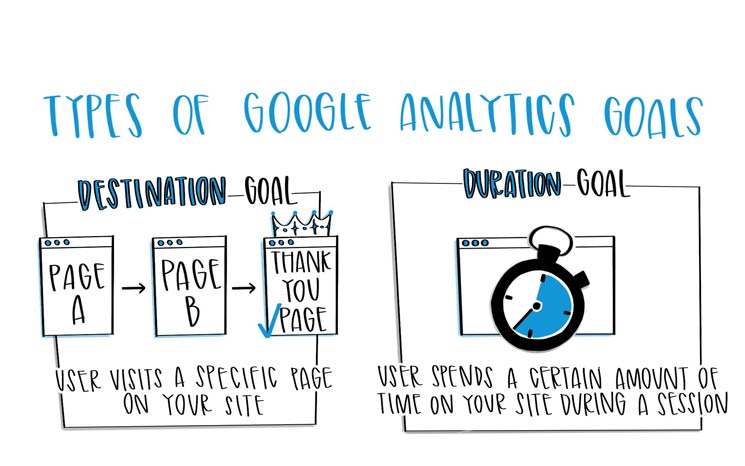What Data Is Google Analytics Goals Unable to Track and Why
What Data Is Google Analytics Goals Unable to Track and Why
Blog Article
Introducing the Blind Attractions: Recognizing What Google Analytics Goals Can not Determine
In the realm of digital analytics, Google Analytics stands as an effective device for tracking and assessing on the internet customer communications. Understanding what Google Analytics objectives can not determine is essential for getting a detailed view of user behavior and involvement.
Customer Behavior on External Operatings Systems
Recognizing how users engage on exterior platforms is vital for optimizing online strategies. Outside systems, such as social media sites networks, recommendation sites, and on the internet discussion forums, play a considerable function in driving traffic to a firm's website. By evaluating customer habits on these systems, services can get useful insights right into the efficiency of their advertising and marketing initiatives and the preferences of their target audience.
One trick facet of customer habits on outside systems is the referral resource. By tracking where the users are originating from, companies can recognize which platforms are driving one of the most traffic to their internet site. This info can aid companies assign their sources better, concentrating on the systems that generate the very best outcomes.

Offline Conversions and Communications
Examining individual actions on exterior platforms supplies important insights into online strategies; however, considering offline conversions and communications is similarly crucial for a thorough understanding of a business's general efficiency. While Google Analytics stands out at tracking online communications, it falls short in recording the complete client journey that usually consists of offline touchpoints. Offline conversions, such as in-store purchases or phone queries, play a significant duty in several businesses' success. Ignoring these interactions can result in an altered sight of the performance of advertising campaigns and general business performance.

Attribution Beyond Last Click
When diving into the realm of digital advertising analytics, it comes to be important to look past the single touchpoint of the last click for an extra extensive understanding of acknowledgment. While Google Analytics supplies beneficial insights right into individual behavior, depending only on last-click attribution can be limiting - what data is google analytics goals unable to track. Acknowledgment models that surpass the last click offer a more nuanced view of the customer journey, taking into consideration all the touchpoints that result in a conversion
Attribution past the last click permits marketing experts to designate credit rating to various interactions along the conversion path, offering a more clear image of the efficiency of various marketing channels. By discovering multi-touch acknowledgment designs such as straight, time decay, or position-based acknowledgment, services can much better allocate their advertising budgets and maximize their methods for optimal impact.
Comprehending the influence of each touchpoint in the conversion process is important for making notified choices and making the most of ROI. By accepting acknowledgment beyond the last click, services can get much deeper insights right into client habits and tailor their advertising initiatives much more efficiently.
Cross-Device and Cross-Browser Tracking

Likewise, cross-browser monitoring matches cross-device monitoring by recording customer actions as they switch over in between various internet internet browsers. Comprehending exactly how individuals interact with sites on various web browsers can help marketing professionals enhance their on the internet experiences to make certain consistency and performance throughout various systems.
Qualitative Information and User Intent
Understanding user intent with qualitative information evaluation is important for developing targeted electronic advertising approaches that resonate with the demands and preferences of the target market. Qualitative data offers understandings into the 'why' behind customer activities, dropping light on motivations, emotions, and preferences that quantitative information alone can not capture. By examining user comments, remarks, and interactions, online marketers can reveal useful info regarding customer intent, allowing them find to customize their messaging, material, and offerings to better line up with what their target market is looking for.
Qualitative data also assists in recognizing the context in which customers involve with a website or application. This contextual understanding makes it possible for marketing experts to develop more appropriate and individualized experiences, eventually driving greater involvement and conversion rates. By diving into customer intent via qualitative information analysis, businesses can acquire a much deeper understanding of their target audience, resulting in a lot more efficient advertising strategies that satisfy customers' expectations and demands.
Verdict
Finally, Google Analytics objectives have restrictions in gauging user behavior on exterior platforms, offline conversions, acknowledgment beyond last click, cross-device and cross-browser monitoring, and qualitative information associated with individual intent. what data is google analytics goals unable to track. It is necessary for companies to be familiar with these unseen areas in order to supplement their information analysis with other devices and approaches to obtain an extra thorough understanding of their target market and boost their total electronic advertising and marketing approaches
By assessing customer actions on these systems, companies can gain valuable understandings right into the effectiveness of their marketing Web Site efforts and the preferences of their target audience.
Assessing customer actions on external platforms offers beneficial insights into online techniques; however, considering offline conversions and communications is equally imperative for a comprehensive understanding of a firm's general performance.In digital marketing analytics, relocating past last-click attribution to explore cross-device and cross-browser monitoring is essential for getting a holistic understanding of individual interactions throughout various systems and gadgets. By analyzing customer responses, remarks, and interactions, marketing professionals can uncover valuable details concerning user intent, allowing them to tailor their messaging, web content, and offerings to much better straighten with what their audience is seeking.
By delving right into user intent via qualitative information evaluation, services can gain a much deeper understanding of their target audience, leading to a lot more reliable advertising methods that fulfill customers' needs and expectations.
Report this page